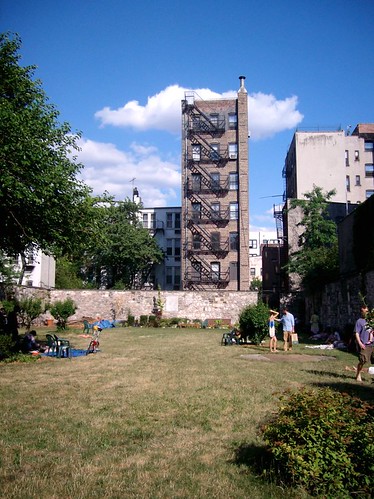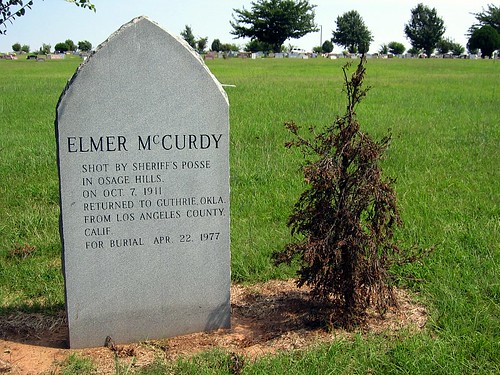Essential Guide: Cemeteries

La Recoleta Cemetery in Buenos Aires, Argentina; Allison C. Meier/Photographer
Modern cemeteries are sprawling and quiet, glimpsed from car windows or over fences, but mostly cut off from the world of the living. The dead used to be near us. Cemeteries were small and located in the center of towns and cities, visible reminders of mortality. The evolution of the cemetery reflects changing attitudes towards death, as well as the population growth of people and, subsequently, corpses.

La Recoleta Cemetery in Buenos Aires, Argentina; Allison C. Meier/Photographer
The guide below traces modern cemetery history through Atlas Obscura locations.
Churchyard Cemetery
The Old Dutch Church of Sleepy Hollow :: Tarrytown, New York
With the rise of Christianity in Europe and then the United States, most people were buried in churchyard cemeteries. Churches like the Old Dutch Church of Sleepy Hollow had small plots of land where the richest parishioners were buried in the eastern part (to see the sunrise on Judgement Day), while the unbaptized and other less holy people were buried in the northern corner.

New York Marble Cemetery; Allison C. Meier/Photographer
Town Cemetery
New York Marble Cemetery :: New York, New York
A few private town cemeteries were also available, such as the New York Marble Cemetery. A “place of interment for gentlemen,” it was designed with all below ground marble tombs to prevent the spread of disease. This was increasingly becoming a problem with the church cemeteries, which were overflowing with coffin stacked upon coffin, bodies decomposing while barely covered with soil.

Les Catacombes de Paris; Allison C. Meier/Photographer
Catacombs
Les Catacombes de Paris :: Paris, France
Filled to capacity, the church cemeteries became putrid dumping grounds, where walls sometimes broke open and spilled rotting bodies onto the sidewalk or into the basements of neighboring buildings. Needing a solution to this public health hazard, some cities opted to relocate cemeteries. The quarry tunnels in Paris were used to hold entire cemeteries of exhumed skeletons. The bones were carefully stacked and accompanied by a sign stating their original resting place.

Cimitero Monumentale di Staglieno; Xavier de Jauréguiberry/Photographer
Garden Cemetery
Cimitero Monumentale di Staglieno :: Genova, Italy
For the burial of those Parisians who had not yet turned to skeletons, Père Lachaise was established on the outskirts of the city. This garden style cemetery was the opposite of the cramped churchyard: orderly, clean, peaceful, and landscaped. This was a cemetery meant to be visited as much as any park. In Genova, Italy, Cimitero Monumentale di Staglieno is an example of the garden cemetery, acting as an outdoor art museum with beautiful sculptures demonstrating the realist movement.

Green-Wood Cemetery in Brooklyn, New York; Allison C. Meier; Photographer
Rural Cemetery
Green-Wood Cemetery :: Brooklyn, New York
In the United States in the mid-1800s, Romanticism and an interest in nature inspired the rural style of cemetery. Green-Wood Cemetery in Brooklyn incorporated the rolling hills, oak groves, and glacial ponds of the countryside into its landscape of ornate monuments and winding roads. At its peak, Green-Wood was second only to Niagra Falls in American tourism and served as inspiration for Central Park in Manhattan.

Summit View Cemetery in Guthrie, Oklahoma; Allison C. Meier/Photographer
Memorial Park
Summit View Cemetery :: Guthrie, Oklahoma
From the mid-1800s to mid-1900s. the memorial park cemeteries took over in popularity. Expansive lawns cut into orderly grids held flat, plaque gravemarkers that concealed the cemetery’s identity. Summit View Cemetery in Guthrie, Oklahoma, has many of these hidden tombstones, although there are also upright graves, like that of the unfortunate bank robber turned sideshow mummy Elmer McCurdy.

Madingley American Cemetery in Cambridge, United Kingdom
Military
Madingley American Cemetery :: Cambridge, United Kingdom
Similar to the memorial park cemeteries are military cemeteries, which became more prevalent with the massive casualties of the American Civil War. The military cemetery with its flat, manicured grass field and thousands of identical headstones was carried into the wars of the 20th century, including the Madingley American Cemetery for servicemen lost in World War II.

Neptune Memorial Reef in Miami Florida; Todd Murray/Photographer
New Ideas
Neptune Memorial Reef :: Miami, Florida
Space is yet again running out, and many of the cemeteries established on the outskirts of town have been overtaken by urban expansion. There is now a “green” or natural burial movement to reduce the use of hazardous embalming fluids and rethink how loved ones can be honored in death. One example is the Neptune Memorial Reef opened in 2007 off of Florida, where cremated remains are mixed with concrete and cast into sculptures placed underwater as a habitat for fish and coral.










Follow us on Twitter to get the latest on the world's hidden wonders.
Like us on Facebook to get the latest on the world's hidden wonders.
Follow us on Twitter Like us on Facebook